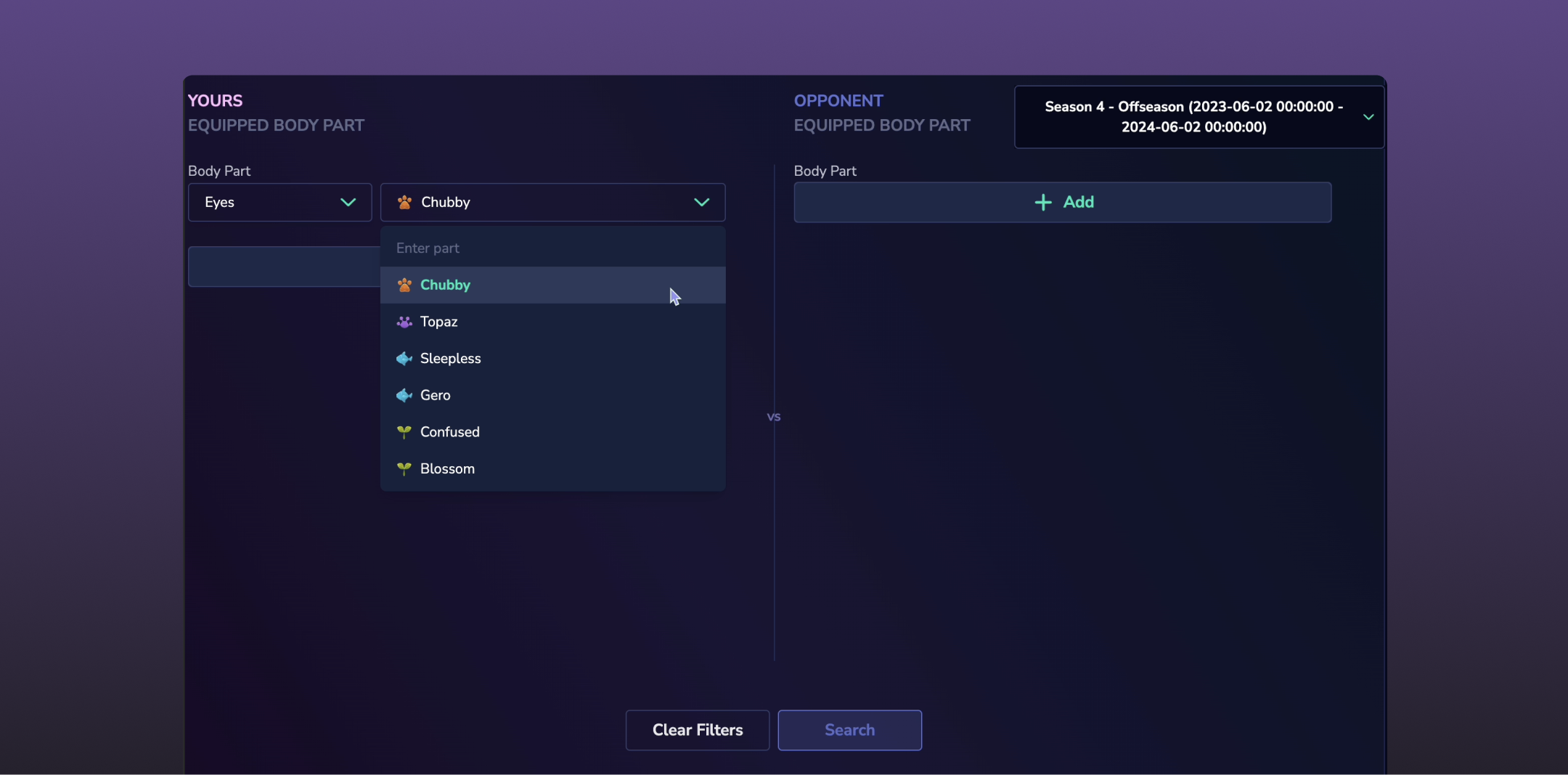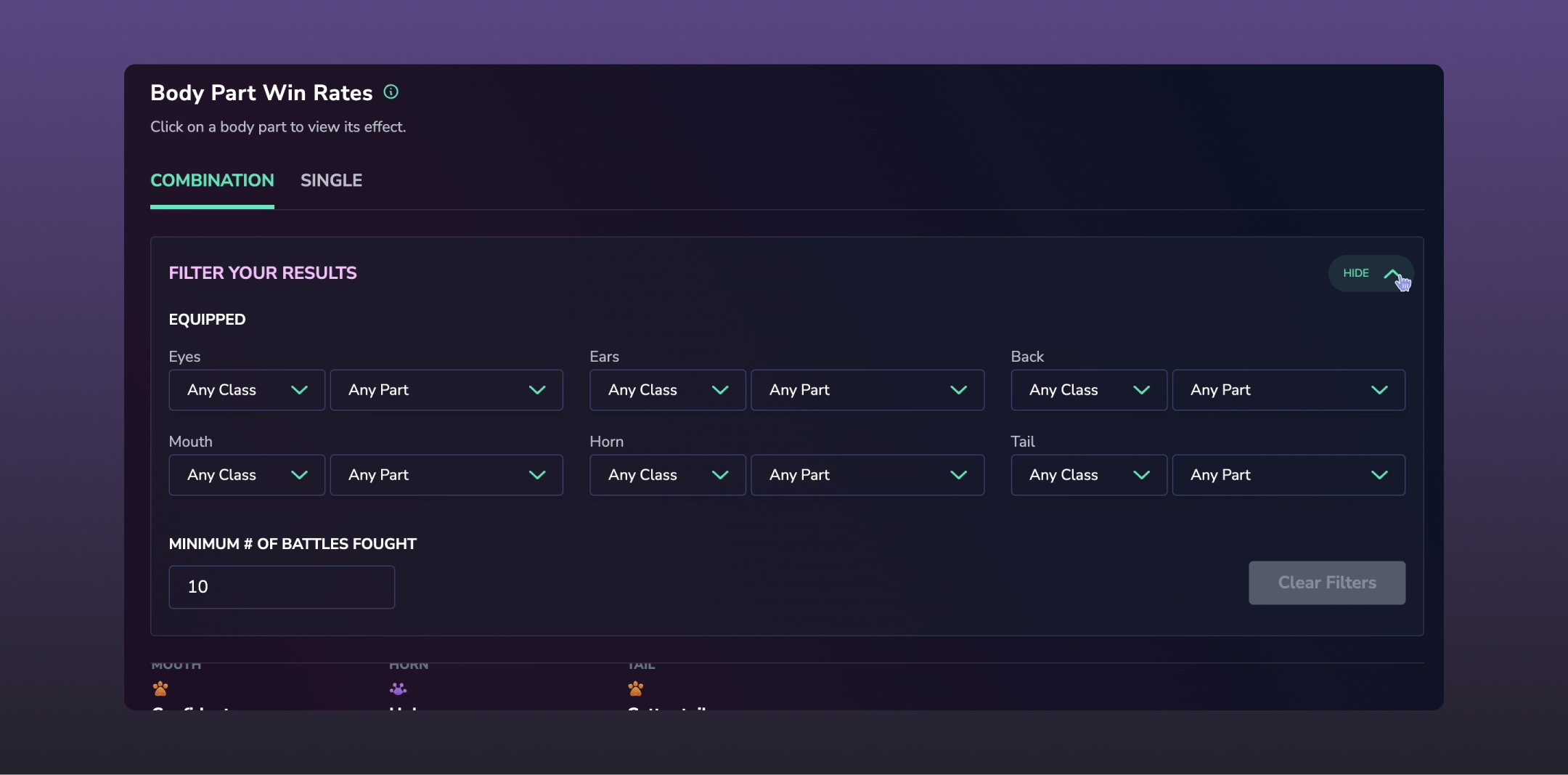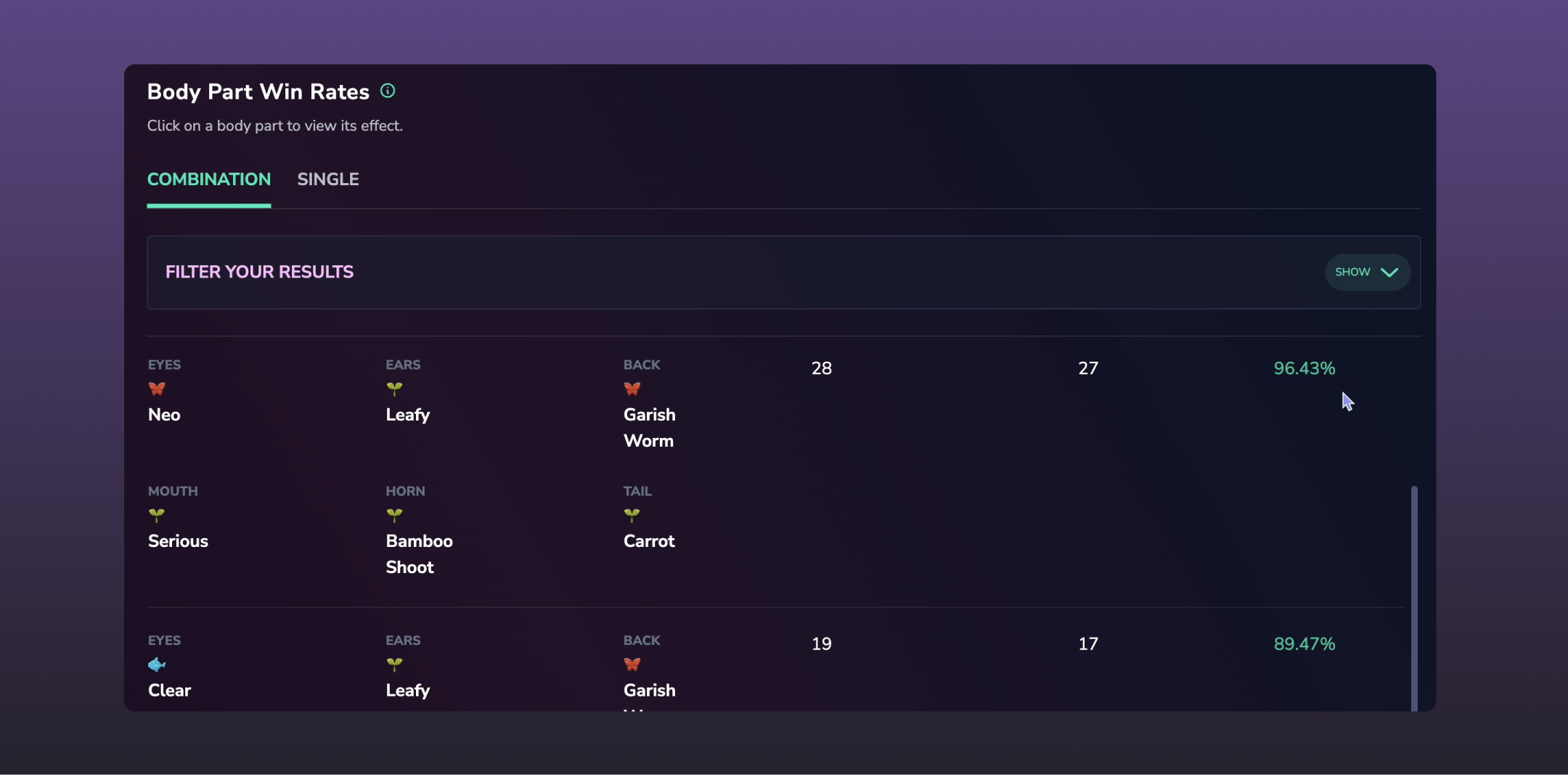Crypto Unicorn Breeding Tool
About the Game
Crypto Unicorns is a Web3 farming and battle game where the core assets are unique, NFT-based unicorns. In the game's economy, breeding is a fundamental mechanic. It's the primary way players create new assets, increase rarity, and drive strategy.
The Challenge
Breeding in Crypto Unicorns was a high-risk gamble. Players had to spend valuable resources without knowing the odds of getting a desirable unicorn. Our challenge was to be the first breeding simulator of its kind and give players the data they needed to make confident decisions.
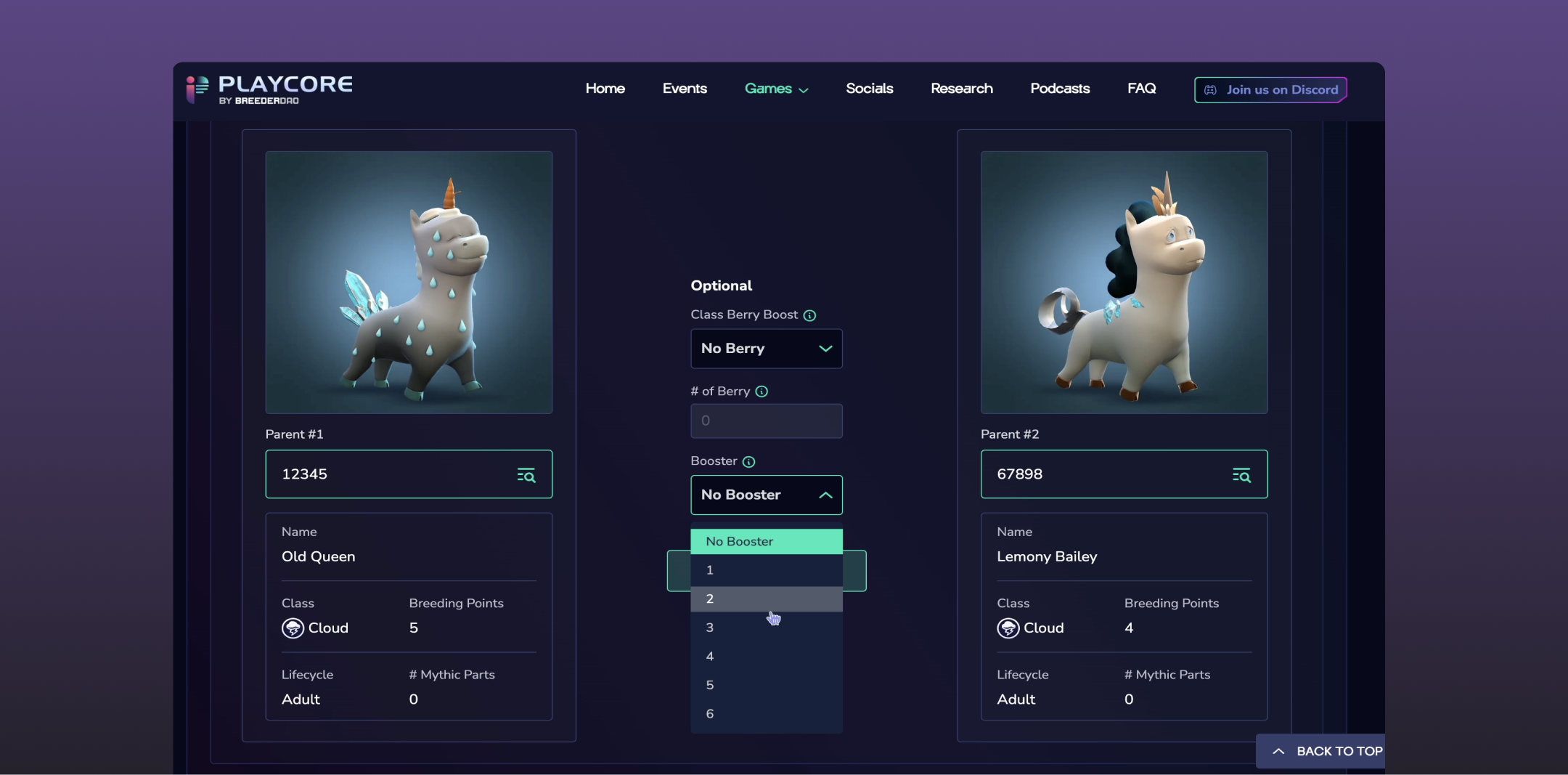
The Solution
I designed and built an intuitive Breeding Simulator that players of all levels could benefit from. A user starts by selecting two parent unicorns from their collection, then the tool instantly runs hundreds of genetic simulations based on the game's official rules. It presents a comprehensive forecast, showing the probable classes, potential body parts with their inheritance odds, and the projected stat ranges of the resulting offspring.
Key Decisions
Card Style
The tool features two panels for selecting parent unicorns. I used a strict visual hierarchy (Asset Image, Name, Class, Breeding Points) to allow for instant recognition.
Sectioned Results for Different Needs
Instead of a single data dump, I implemented a sectioned results panel. As the data showed everything from the Mid to Minor genes, adding sections was a key decision to manage cognitive load.
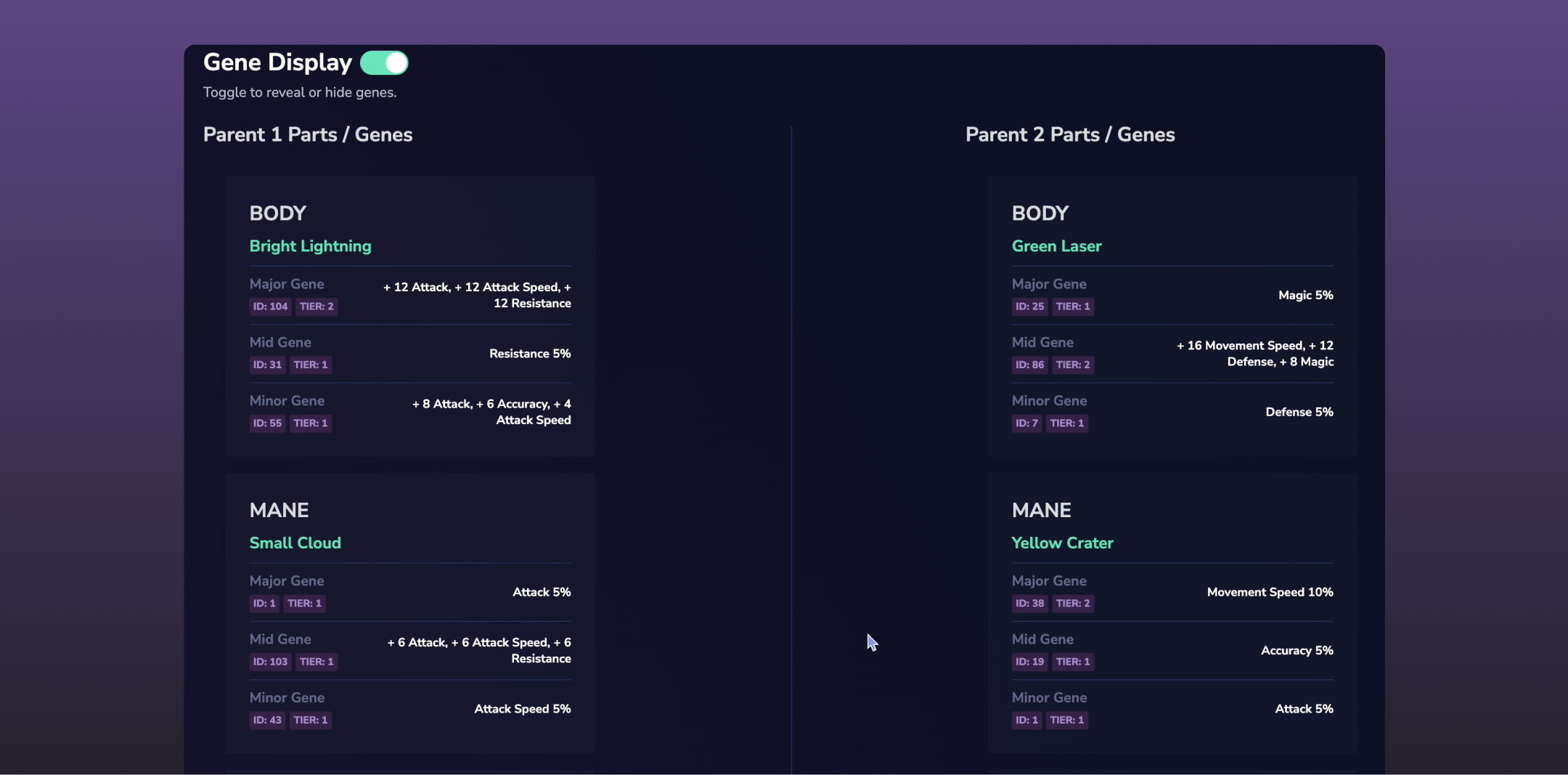
The Genes Display offers genetic deep-dives for advanced "min-maxing" players.
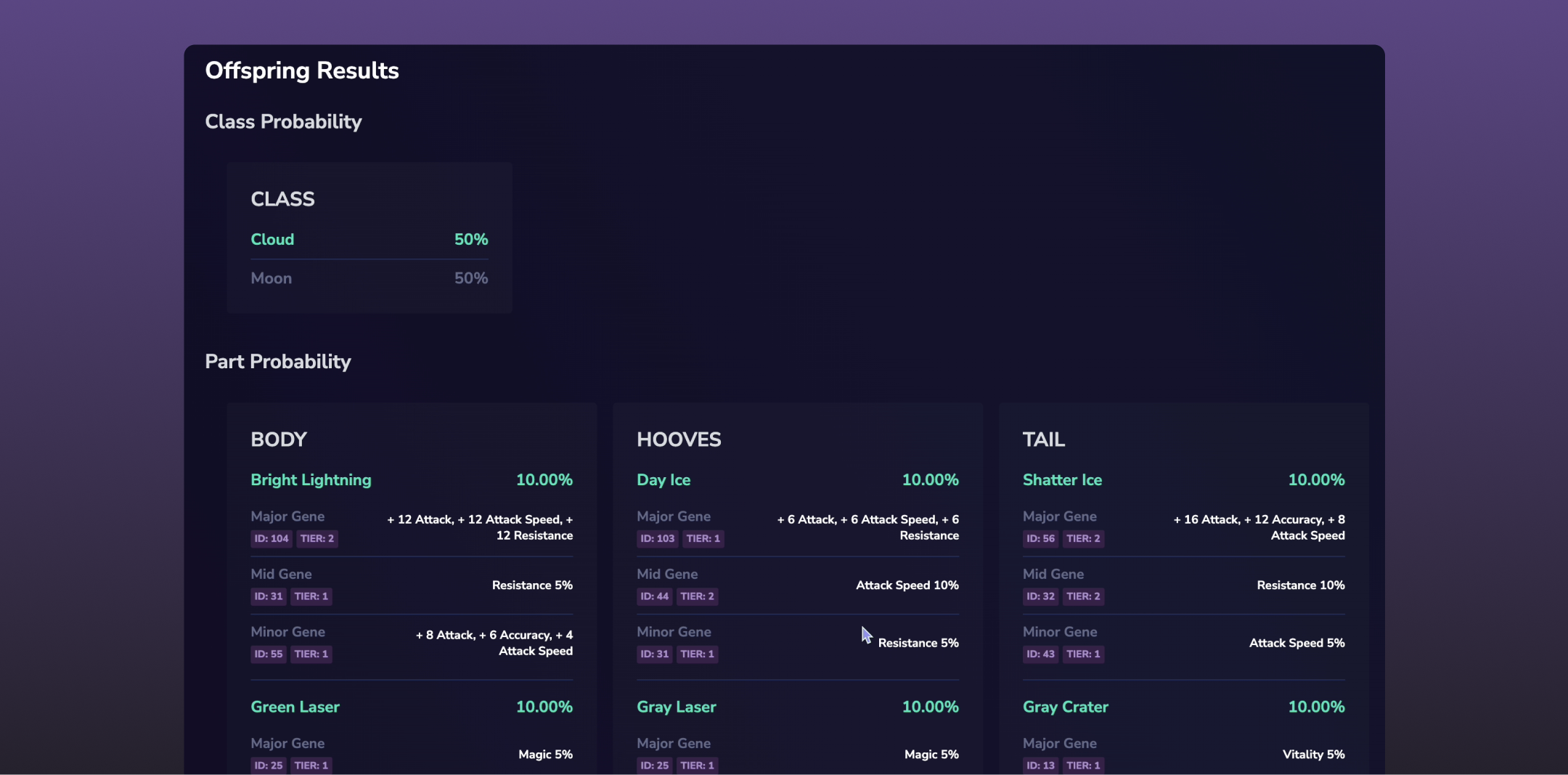
The Offspring Results shows high-level probabilities for users who just want the odds.
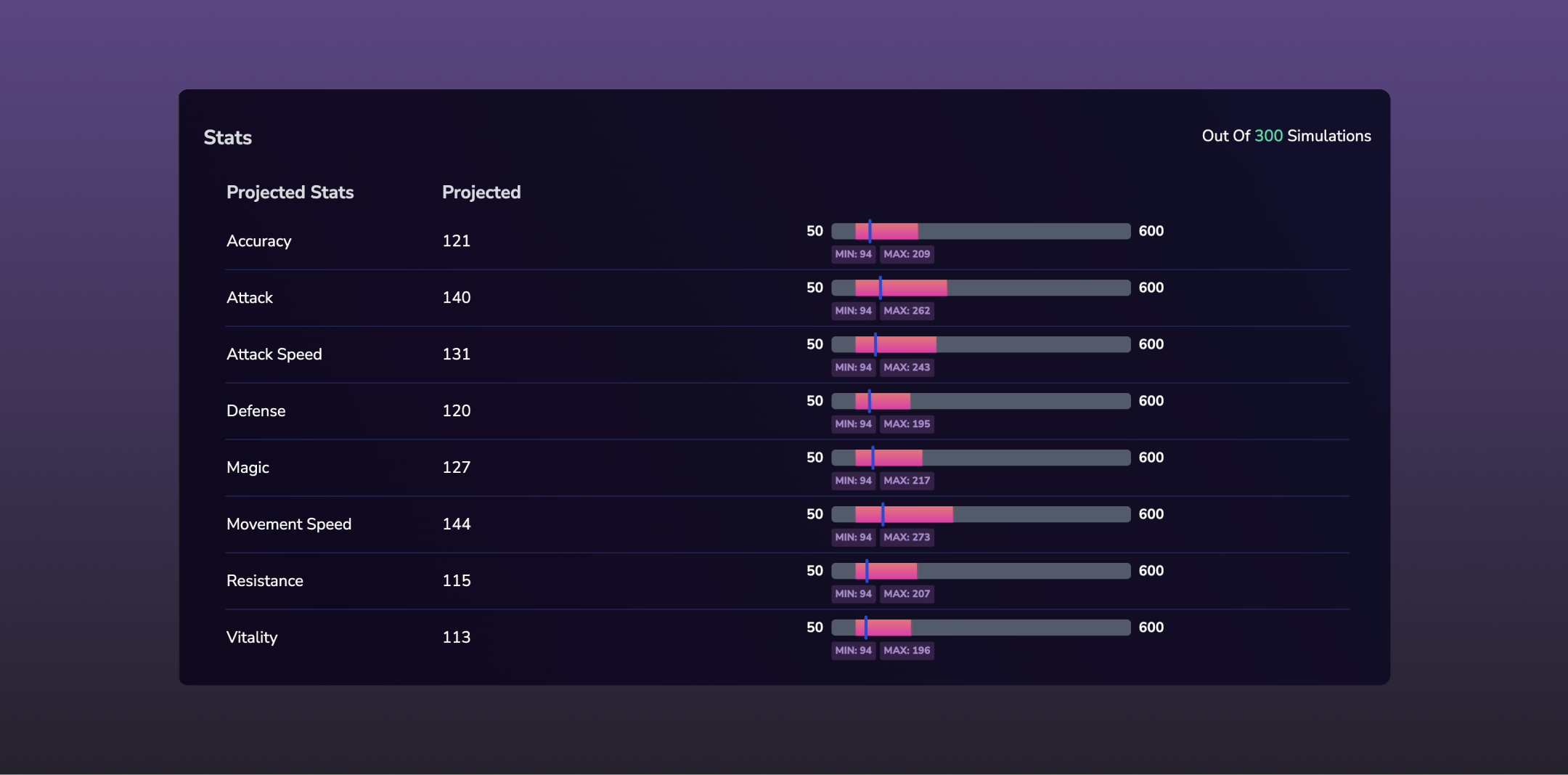
The Stats tab provides a simple, scannable performance forecast.





